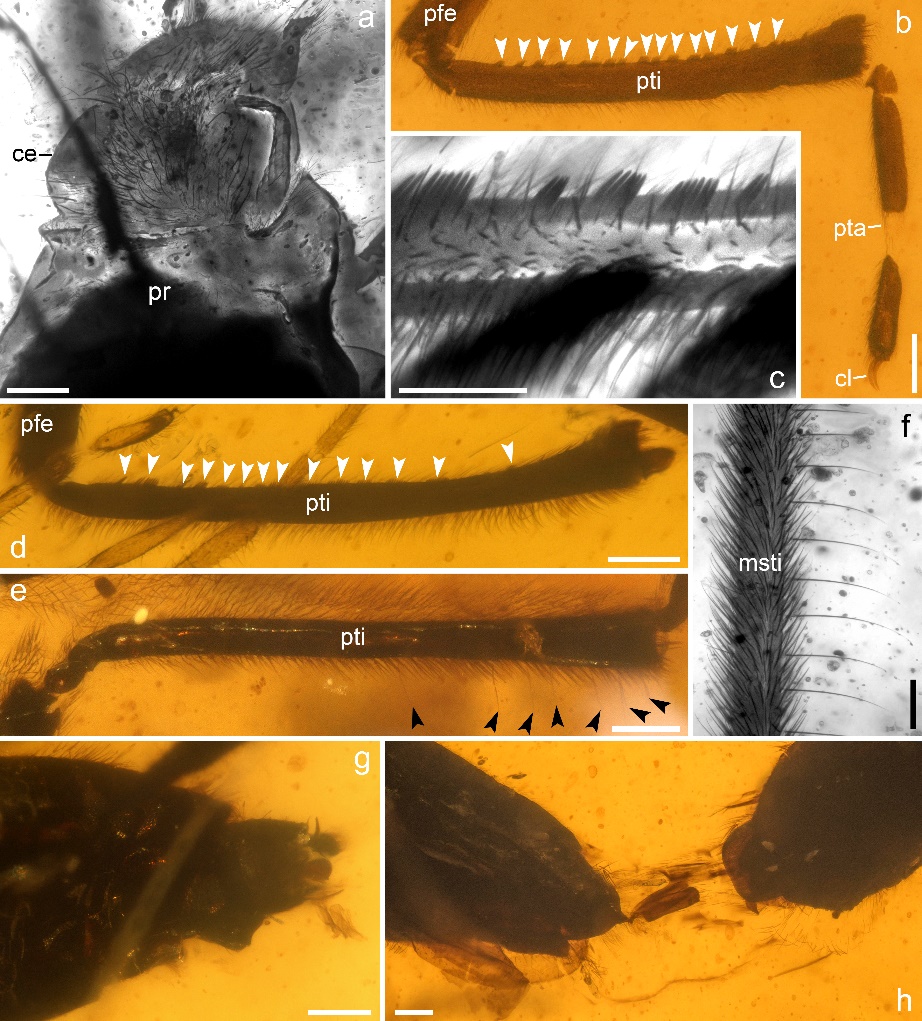Fossilized mating insects are an irreplaceable tool for understanding the evolution of mating behaviors and life history traits in the deep-time record of insects.
A research group led by Prof. HUANG Diying from the Nanjing Institute of Geology and Palaeontology of the Chinese Academy of Sciences (NIGPAS) has systematically studied fossil water striders from the mid-Cretaceous of northern Myanmar (about 100 million years ago) in recent years. Now they have presented the first fossil record of a group of water striders in copulation.
The findings were published in Proceedings of the Royal Society B on April 3.
According to the researchers, instances of copulation are particularly rare in fossil insects, especially aquatic species, thus limiting our understanding of relevant behavioral strategies across geological time periods.
Based on a comprehensive analysis of the functional morphology and behavioral ecology of the fossilized water striders, the researchers revealed the mating behavior and potential sexual conflicts of Cretaceous water striders.
Gerromorpha includes water striders and their relatives that are conspicuously adapted to motion, feeding, and mating on the water surface. They occupy a wide range of niches including freshwater, coastal, and even pelagic environments. The specialized morphology and diverse behavior of gerromorphans have become hot research topics in evolutionary biology, ecology, and even interdisciplinary studies, and have provided a theoretical basis for the development of biomimetic technology on water surfaces.
The common gerromorphan mating system is characterized by strong sexual conflict, manifested as copulatory struggles between the sexes, along with a range of male behaviors such as harassment, coercive violation, and intimidation, while females resist costly mating attempts. The fossil record of gerromorphan insects is limited. For example, only one Mesozoic example of Gerridae has been found in French amber.
In the specimen reported in this study, seven adults of Burmogerris rarus gen. et sp. nov., comprising three paired individuals and a single adult male, as well as four recognizable water strider nymphs are enclosed in an amber piece. Of these, two pairs were captured in mating situations, with smaller males riding on the backs of the females.
In addition, two pairs and a single male appear to have been preserved in the same layer near the upper surface of the amber. "We speculate that the small-sized male B. rarus is unlikely to be territorial, while this species maintains a high population density in the Myanmar amber forest," said Dr. FU Yanzhe from the research group.
Morphological studies using confocal laser microscopy and fluorescence microscopy revealed sexual dimorphism in the protibiae of the new fossils: specifically, protibiae are slightly curved in males while they are straight in females. In addition, male protibiae have 15-17 discontinuous clusters of pegs along the innermost edge, forming a comb-like structure that is absent in females.
"By comparing the male's protibial combs with species in the related family Veliidae, we suggest that the specialized protibial comb of the new fossils functions as a grasping apparatus, likely representing an adaptation to overcome female resistance during struggles," said Prof. HUANG.
These paired fossils probably represent a stage of precopulatory struggle or postcopulatory contact guarding. Males used such contact guarding to prolong mating and thus avoid sperm competition. Since guarding could lead to prolonged association between males and females, the probability of being trapped by resin during mating increased.
The researchers suggested that B. rarus males were more likely to actively search for females rather than adopt a sit-and-wait strategy. The new discovery in Myanmar amber has significant implications for understanding the early evolution of mating behavior in water striders.
Drawing from insights into the paleoecology of the Myanmar amber biota and an analysis of the morphology, including body size, wings, legs, and claws, of the new fossils, this study suggests that B. rarus most likely inhabited small, slow-flowing water bodies, such as tidal pools, near the coast in the Burmese amber forest.









